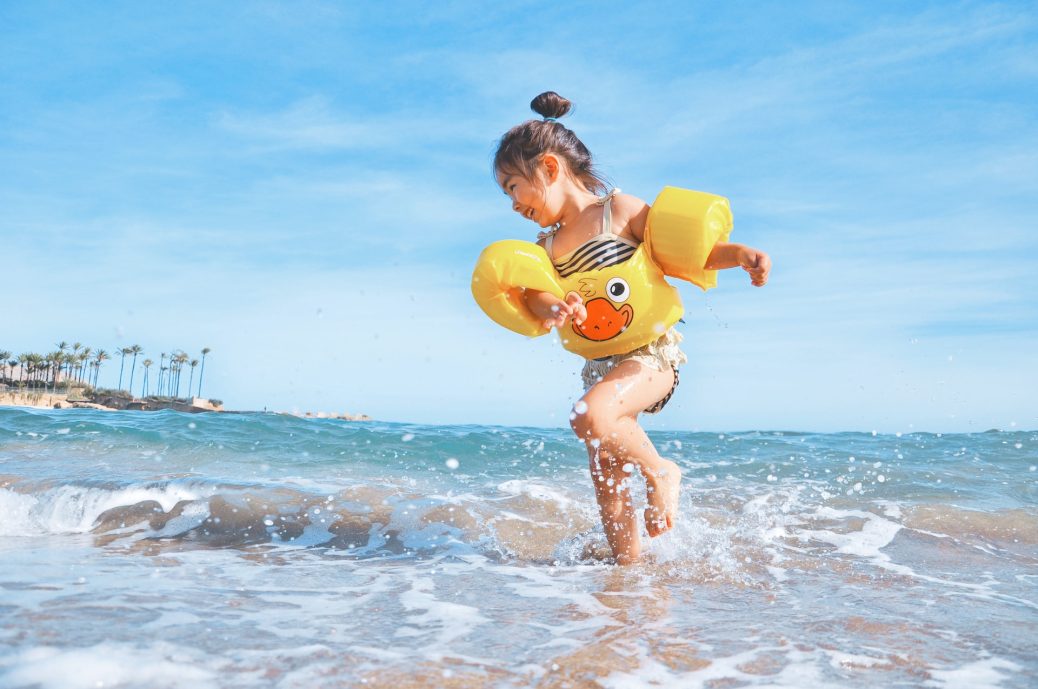Calming and relaxing tips for autistic children to incorporate into their daily routine can help support their emotional well-being and improve their ability to regulate their emotions.
Autistic children may experience difficulties with sensory processing and regulation, which can lead to feelings of overwhelm and anxiety. As a parent or caregiver, it can be challenging to know how to help your child relax and feel calm.
These tips can include sensory activities, relaxation techniques, creating a calming environment, and providing a quiet space for your child to retreat to when they feel overwhelmed. By observing your child’s behaviour and identifying triggers that may be causing stress, you can develop a tailored approach to support their unique needs. With patience and persistence, you can help your child feel more relaxed and calm, promoting a happier and healthier life.
Autism is a neurodevelopmental disorder that affects a person’s communication, social interaction, and behaviour. Autistic children can be sensitive to sensory input, making them easily overwhelmed by their environment. Therefore, it is essential to create a calming and relaxing environment for them.
Here are some calming and relaxing tips for autistic children that you can try:
Create a Sensory-Friendly Environment
Creating a sensory-friendly environment is essential for autistic children. Sensory overload can cause anxiety and stress for them. A sensory-friendly environment includes minimizing bright lights, reducing noise levels, and avoiding strong smells. Use dimmer lights or natural light, noise-cancelling headphones, and essential oils that have a calming effect.
Provide Sensory Toys
Sensory toys can help autistic children to relax and stay calm. Providing them with sensory toys can help them focus their attention and provide a calming effect. Sensory toys can include squishy balls, fidget spinners, and stress balls. These toys provide a tactile sensation that can be soothing for autistic children.
Practice Deep Breathing
Deep breathing exercises can help autistic children relax and reduce anxiety. Teach them how to take deep breaths and hold them for a few seconds before slowly exhaling. You can also try to make it fun by asking them to blow bubbles or blow out candles. Deep breathing exercises can be done anywhere and at any time, making them a simple and effective calming technique.
Using calming and relaxing activities and indulging those tips into the daily routine of autistic children can help them regulate their sensory input and reduce feelings of anxiety and overwhelm.
Engage in Calming Activities
Engaging in calming activities can help autistic children relax and reduce anxiety. Activities can include reading a book, drawing, or colouring. These activities are quiet and do not require much physical activity, making them ideal for calming down.
Practice Mindfulness
Mindfulness is a technique that helps individuals focus on the present moment and become aware of their thoughts and feelings. Practising mindfulness can help autistic children reduce anxiety and improve their ability to focus. Mindfulness exercises can include listening to calming music, guided imagery, and meditation.
By planning calming and using relaxing tips for autistic children encouraging sensory exploration, and providing a quiet space, parents and caregivers can support the emotional well-being of autistic children and help them feel more relaxed and calm.
Provide a Safe Space
Providing a safe space for autistic children can help them feel secure and relaxed. This space can be a quiet room or a designated area in the house where they can retreat when they feel overwhelmed. Ensure that the space is comfortable, has calming colours, and has items that they find soothing.
Use Visual Aids
Visual aids can help autistic children understand what is expected of them and reduce anxiety. Using visual aids can include using picture schedules, social stories, and visual timers. These aids provide a visual representation of what is going to happen and help autistic children feel more in control.
Maintain a Routine
Maintaining a routine can help autistic children feel more in control and reduce anxiety. A routine can include consistent meal times, bedtimes, and structured activities. Knowing what to expect can help autistic children feel more secure and reduce anxiety.
Provide Physical Activity
Physical activity can help autistic children release energy and reduce anxiety. Physical activities can include yoga, dancing, or going for a walk. These activities can help release endorphins, which can improve mood and reduce anxiety.
Autistic Struggle with Depression and Tips
Use Positive Reinforcement
Positive reinforcement can help autistic children feel more confident and reduce anxiety. Praising them for their accomplishments and encouraging them to continue working towards their goals can help them feel more positive about themselves.
Autistic Children Can Live a Normal Life
Provide Weighted Items
Weighted items can provide a calming effect for autistic children. Weighted blankets, vests, and stuffed animals can provide a sense of comfort and security. These items apply gentle pressure to the body, which can have a calming effect on the nervous system.
Use Aromatherapy
Aromatherapy can help autistic children relax and reduce anxiety. Essential oils, such as lavender and chamomile, have a calming effect and can be used in a diffuser or applied topically. Be sure to check with your child’s healthcare provider before using any essential oils.
Offer a Sensory Diet
A sensory diet is a planned schedule of activities that provide sensory input to help regulate the nervous system. A sensory diet can include a combination of physical activities, sensory play, and relaxation techniques. Work with your child’s therapist to create a sensory diet that meets their specific needs.
Practice Progressive Muscle Relaxation
Progressive muscle relaxation involves tensing and then relaxing different muscle groups in the body. This technique can help autistic children release tension and relax. Guide your child through the exercise by having them tense and relax each muscle group, starting from their toes and working up to their head.
Use Social Stories
Social stories are short stories that help autistic children understand social situations and expectations. Social stories can provide a sense of predictability and reduce anxiety in social situations. You can create your own social stories or find them online. Read the stories with your child before social events to help them prepare.
By incorporating these additional tips into your child’s routine, you can help them feel more relaxed and calm. Remember to tailor your approach to your child’s individual needs and preferences. With patience and persistence, you can create a nurturing environment that supports your child’s emotional and sensory needs.
Research on Autism Social Skills
Use Calming Music
Calming music can help autistic children relax and reduce anxiety. Playing soft, soothing music can create a calming atmosphere and help them unwind. You can also encourage your child to listen to music they enjoy to help them feel more relaxed.
Encourage Sensory Exploration
Sensory exploration can help autistic children regulate their sensory input and reduce anxiety. You can encourage your child to explore different textures, scents, and tastes to help them feel more comfortable with their environment. This can include playing with sensory bins, trying new foods, or experimenting with different scents.
Provide a Quiet Space
Providing a quiet space where your child can retreat when they feel overwhelmed can help them feel more secure and relaxed. This space can be a designated area in your home where your child can relax and unwind. Ensure that the space is free from distractions and has calming items such as books, puzzles, or sensory toys.
By incorporating these additional tips into your child’s routine, you can help them feel more relaxed and calm. Remember to observe your child’s behaviour and adjust your approach accordingly. With patience and persistence, you can create a calming and relaxing environment that supports your child’s unique needs.
Conclusion
In conclusion, creating a calming and relaxing environment for autistic children is essential for their well-being. By providing sensory-friendly toys, practising deep breathing, engaging in calming activities, practising mindfulness, providing a safe space, using visual aids, maintaining a routine, providing physical activity, and using positive reinforcement, you can help autistic children relax and reduce anxiety.
FAQS
How can I tell if my child is feeling overwhelmed or anxious?
Autistic children may display a range of behaviours when they are feeling overwhelmed or anxious, including increased stimming, avoiding eye contact, becoming more withdrawn, or having a meltdown. It’s important to observe your child’s behaviour and try to identify triggers that may be causing them stress. Once you have identified these triggers, you can work with your child to develop coping strategies to help them manage their emotions.
Is it safe to use essential oils for calming autistic children?
While essential oils can be beneficial for some children, it’s important to exercise caution when using them with autistic children. Essential oils are highly concentrated and can be overwhelming for some individuals. Always check with your child’s healthcare provider before using essential oils to ensure that they are safe and appropriate for your child. Additionally, it’s important to start with a small amount and observe your child’s reaction before using them more extensively.
References
- Autism Society: Tips for Calming an Autistic Child
This article provides practical tips for parents and caregivers on how to calm an autistic child, including sensory activities, relaxation techniques, and creating a calming environment. It also offers suggestions on how to identify triggers that may cause stress and anxiety for autistic children.
Link: https://www.autism-society.org/tips-for-calming-an-autistic-child/
- National Autistic Society: Sensory Strategies
This resource offers information on sensory processing difficulties in autistic individuals and provides strategies for managing sensory overload. It includes practical tips for creating a sensory-friendly environment, as well as sensory activities that can help regulate the nervous system.
Link: https://www.autism.org.uk/advice-and-guidance/topics/sensory-differences/sensory-strategies


